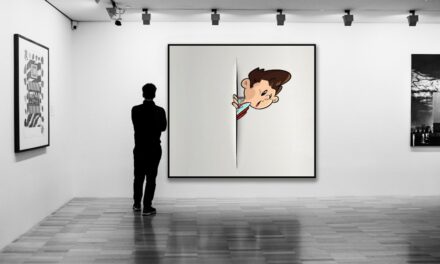Albrecht Dürer was born on 21st May 1471 in Nuremberg, a city that was a vibrant hub of trade and culture in the Holy Roman Empire. He was the third of eighteen children born to Albrecht Dürer the Elder, a goldsmith, and Barbara Holper. Growing up in a family steeped in the arts, Dürer was exposed to craftsmanship from an early age.
His father’s profession undoubtedly influenced his artistic inclinations, as he was surrounded by the intricate designs and techniques of metalwork. The environment of Nuremberg, with its rich tapestry of artistic and intellectual pursuits, provided fertile ground for Dürer’s burgeoning talent. Dürer’s formal education began at the age of fifteen when he became an apprentice to the painter Michael Wolgemut.
This apprenticeship lasted for three years and was crucial in shaping his artistic foundation. Under Wolgemut’s guidance, Dürer learned not only painting but also the intricacies of woodcutting and printmaking, skills that would later become pivotal in his career. The experience allowed him to absorb the techniques of the time while also encouraging his innate creativity.
By the time he completed his apprenticeship, Dürer had developed a keen understanding of perspective, anatomy, and composition, which would later define his distinctive style.
Summary
- Albrecht Dürer was born in Nuremberg, Germany in 1471 and showed an early talent for drawing and painting.
- Dürer was heavily influenced by Italian Renaissance artists such as Leonardo da Vinci and Raphael, and his style combined northern and southern European artistic traditions.
- The Renaissance in Nuremberg provided Dürer with a rich cultural and intellectual environment that shaped his artistic development.
- Dürer’s travels to Italy and the Netherlands had a profound impact on his art, leading to a greater emphasis on humanism and naturalism in his work.
- Dürer’s innovative printmaking techniques, such as woodcuts and engravings, revolutionized the art world and established him as a master of the medium.
Artistic Influences and Style
Dürer’s artistic style was profoundly influenced by a variety of sources, both local and international. The Northern Renaissance was characterised by a meticulous attention to detail and a fascination with nature, elements that resonated deeply with Dürer’s sensibilities. He was particularly inspired by the works of Italian masters such as Leonardo da Vinci and Raphael, whose emphasis on humanism and naturalism left a lasting impression on him.
Dürer’s travels to Italy exposed him to these innovative ideas, which he adeptly integrated into his own work, creating a unique fusion of Northern and Southern European styles. In addition to Italian influences, Dürer was also inspired by the Gothic tradition prevalent in Germany. His early works reflect this influence through their intricate line work and elaborate ornamentation.
However, as he matured as an artist, Dürer began to develop a more individualistic style that combined realism with a deep emotional resonance. His ability to capture the human form with precision while infusing it with psychological depth set him apart from his contemporaries. This distinctive approach not only showcased his technical prowess but also marked a significant evolution in the portrayal of subjects during the Renaissance.
The Renaissance in Nuremberg
Nuremberg during Dürer’s lifetime was a city at the forefront of the Renaissance movement in Northern Europe. It was a melting pot of ideas, where artists, scholars, and merchants converged to exchange knowledge and foster creativity. The city’s wealth and status as a centre for trade allowed for the patronage of the arts to flourish, providing artists like Dürer with opportunities to showcase their talents.
The vibrant atmosphere of Nuremberg played a crucial role in shaping Dürer’s artistic vision and ambitions. The cultural climate of Nuremberg was further enriched by its guild system, which regulated artistic practices and ensured high standards of craftsmanship.
This collaborative spirit fostered an environment where experimentation and exploration were encouraged, enabling Dürer to push the boundaries of traditional art forms. As he navigated this dynamic landscape, Dürer emerged as a leading figure in the Northern Renaissance, leaving an indelible mark on the artistic legacy of Nuremberg.
Dürer’s Travels and Impact on His Art
Dürer’s travels played a pivotal role in shaping his artistic identity and expanding his horizons. In 1494, he embarked on a journey to Italy that would profoundly influence his work. This trip allowed him to immerse himself in the rich artistic traditions of the Italian Renaissance, where he encountered groundbreaking techniques and ideas that challenged his understanding of art.
The exposure to classical antiquity and the study of human anatomy ignited a passion for realism that would become a hallmark of his later works. During his time in Italy, Dürer studied the works of renowned artists such as Michelangelo and Raphael, absorbing their mastery of form and composition. He returned to Nuremberg with a renewed sense of purpose, eager to incorporate these influences into his own practice.
This synthesis of Northern detail with Southern elegance resulted in a distinctive style that set Dürer apart from his contemporaries. His travels not only enriched his artistic vocabulary but also established him as a bridge between two distinct artistic traditions, allowing him to create works that resonated with audiences across Europe.
Famous Works and Techniques
Dürer is celebrated for a number of iconic works that exemplify his mastery of various techniques. One of his most renowned pieces is “Melencolia I,” created in 1514, which is often regarded as one of the greatest achievements in printmaking. This engraving is rich in symbolism and showcases Dürer’s ability to convey complex emotions through intricate details.
The melancholic figure at the centre reflects the artist’s own struggles with creativity and inspiration, making it a deeply personal work that resonates with viewers on multiple levels. Another significant work is “The Four Horsemen of the Apocalypse,” part of his series illustrating the Book of Revelation. This piece demonstrates Dürer’s exceptional skill in capturing movement and drama through dynamic compositions and expressive figures.
His use of chiaroscuro—a technique that employs strong contrasts between light and dark—adds depth and intensity to his works, enhancing their emotional impact. Dürer’s innovative approach to engraving allowed him to produce prints that were not only visually stunning but also accessible to a wider audience, further solidifying his reputation as a master artist.
Dürer’s Printmaking and Engravings
Dürer’s contributions to printmaking are nothing short of revolutionary. He elevated engraving from a mere reproductive technique to a respected art form in its own right. His meticulous attention to detail and innovative methods set new standards for printmakers across Europe.
Dürer’s engravings often featured intricate line work and delicate shading, showcasing his technical prowess while allowing for expressive storytelling. One of his most significant innovations was the use of woodcuts alongside engravings, which enabled him to produce large editions of his works at a relatively low cost. This accessibility allowed for greater dissemination of art during a time when printed materials were becoming increasingly popular.
Dürer’s prints not only showcased his artistic vision but also served as vehicles for disseminating ideas and themes prevalent during the Renaissance. His ability to combine artistry with craftsmanship established him as a pioneer in printmaking, influencing generations of artists who followed in his footsteps.
Dürer’s Impact on the Northern Renaissance
Dürer’s influence on the Northern Renaissance cannot be overstated; he played a crucial role in bridging the gap between Northern European art traditions and the emerging Italian Renaissance ideals. His innovative techniques and unique style inspired countless artists across Europe, encouraging them to explore new themes and approaches in their work. Dürer’s emphasis on realism and human emotion resonated deeply with audiences, paving the way for future generations to embrace similar ideals.
Moreover, Dürer’s writings on art theory further solidified his impact on the Northern Renaissance. His treatises on proportion, perspective, and anatomy provided invaluable insights for aspiring artists seeking to refine their skills. By sharing his knowledge through written works, Dürer not only elevated his own status but also contributed significantly to the development of art education during this transformative period.
His legacy as an artist and theorist continues to inspire artists today, underscoring his enduring significance within the canon of art history.
Patronage and Recognition
Throughout his career, Dürer enjoyed considerable patronage from influential figures who recognised his exceptional talent. His relationship with Emperor Maximilian I is particularly noteworthy; Maximilian commissioned several works from Dürer, including portraits and illustrations for books that celebrated imperial power. This patronage not only provided financial support but also elevated Dürer’s status within the artistic community, allowing him to pursue ambitious projects that showcased his skills.
In addition to royal patronage, Dürer garnered recognition from various civic institutions and wealthy merchants in Nuremberg and beyond. His ability to navigate these relationships effectively enabled him to secure commissions that further solidified his reputation as one of Europe’s leading artists. As he gained prominence, Dürer became increasingly involved in artistic circles, participating in exhibitions and engaging with fellow artists who sought his guidance and expertise.
Dürer’s Legacy and Influence
Dürer’s legacy extends far beyond his lifetime; he is often regarded as one of the most influential artists in Western art history. His innovative techniques in printmaking revolutionised how art was produced and disseminated, paving the way for future generations of artists to explore new mediums and styles. The impact of his work can be seen across various art movements that followed, including Baroque and Romanticism, where artists drew inspiration from Dürer’s emphasis on emotion and realism.
Moreover, Dürer’s writings on art theory continue to be studied by scholars and artists alike. His treatises provide valuable insights into the principles of proportion, perspective, and composition that remain relevant today. By articulating these concepts clearly, Dürer contributed significantly to the development of art education, ensuring that future generations would benefit from his knowledge and expertise.
The Dürer House and Museum
The Dürer House in Nuremberg stands as a testament to Albrecht Dürer’s enduring legacy. This well-preserved building served as both his residence and workshop during much of his life. Today, it functions as a museum dedicated to showcasing Dürer’s life and work, offering visitors an intimate glimpse into the world of this remarkable artist.
The museum houses an extensive collection of Dürer’s prints, drawings, and paintings, allowing audiences to appreciate the breadth of his artistic achievements. Visitors to the museum can explore various exhibitions that delve into different aspects of Dürer’s life—from his early years as an apprentice to his later successes as a master artist. The museum also hosts educational programmes aimed at fostering an appreciation for Dürer’s contributions to art history among younger generations.
By preserving this historical site and promoting awareness of Dürer’s work, the museum plays a vital role in ensuring that his legacy continues to inspire future artists.
Controversies and Misconceptions about Dürer’s Life and Art
Despite his celebrated status, Albrecht Dürer’s life was not without controversies or misconceptions. One prevalent myth is that he was solely an engraver; while he indeed excelled in printmaking, he was also a skilled painter whose contributions to oil painting are often overshadowed by his graphic works. This narrow perception diminishes the complexity of his artistic practice and fails to acknowledge the breadth of his talents.
Another area of contention surrounds Dürer’s relationship with other artists during his time. Some critics have suggested that he was overly competitive or dismissive towards contemporaries; however, evidence suggests that he often collaborated with fellow artists and engaged in meaningful exchanges about technique and theory. These misconceptions highlight the need for a nuanced understanding of Dürer’s life—one that recognises both his achievements and the context within which he operated as an artist.
In conclusion, Albrecht Dürer’s life and work represent a remarkable confluence of talent, innovation, and cultural exchange during one of history’s most transformative periods—the Renaissance. From his early education in Nuremberg to his travels across Europe, Dürer’s journey reflects not only personal growth but also an enduring legacy that continues to resonate within the art world today. Through his mastery of various techniques and profound understanding of human emotion, he has left an indelible mark on art history that inspires countless artists around the globe.
For those interested in exploring the world of art beyond traditional mediums, com/ephemeral-art-temporary-installations-and-performance-pieces/’>ephemeral art offers a unique perspective.
This form of art focuses on temporary installations and performance pieces that challenge the notion of permanence in artistic expression. Understanding the layers and masks in digital painting, as discussed in this article, can also provide valuable insights into the creative process. Additionally, learning about building layers and the concept of “fat over lean” in painting, as explained in this article, can enhance one’s understanding of artistic techniques.




